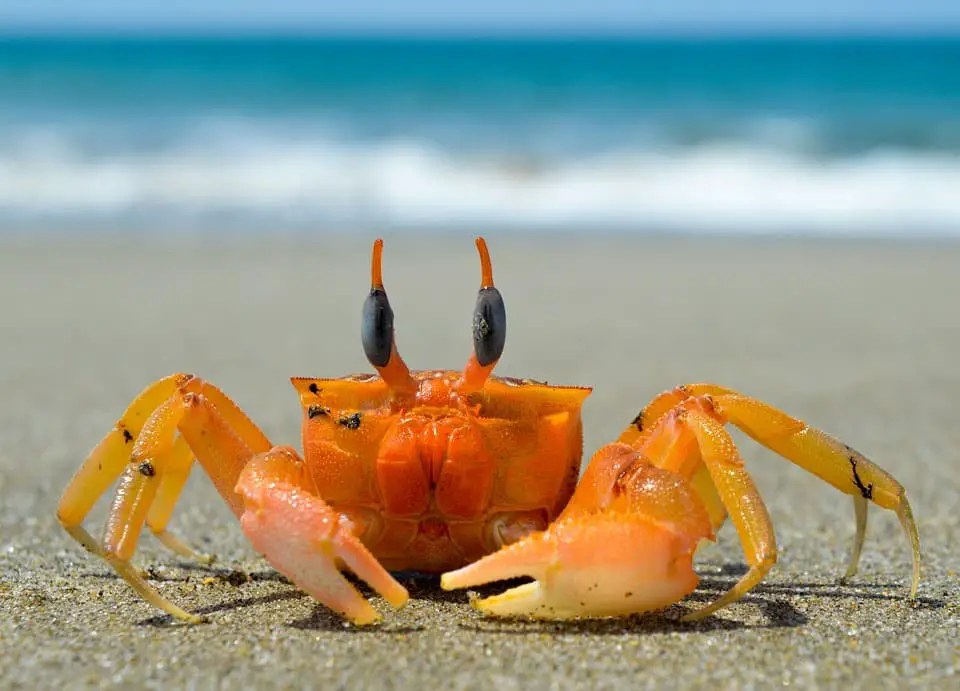Let’s learn about the different types of crabs! Just how many crabs are there? There are about five thousand sea crab species alone!
But we’re going to focus on the most common types of crab while keeping it interesting with pictures and videos while we go through the names of crabs.
Contents
Bairdi Crabs
Bairdi crabs are a member of the snow crab species and one of the few types of edible crabs. It can be steamed, boiled, grilled, sautéed, or even roasted. They have 10 legs (five pairs) and the front pair have pincers.
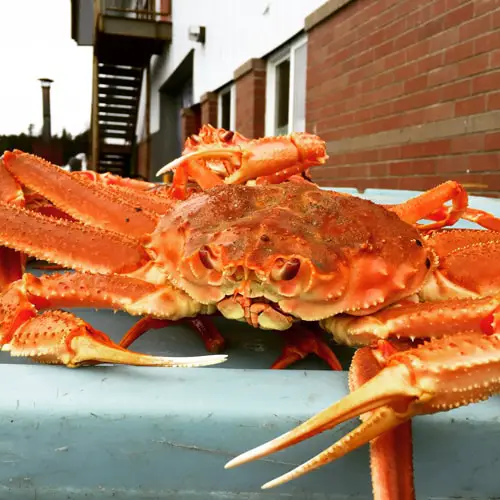
Chionoecetes bairdi is a species of snow crab, alternatively known as bairdi crab and tanner crab. C. bairdi is closely related to Chionoecetes opilio, and it can be difficult to distinguish C. opilio from C. bairdi. Both species are found in the Bering Sea and are sold commercially under the name “Snow crab”.
https://en.wikipedia.org/wiki/Chionoecetes_bairdi
Snow Crabs
Snow crabs is an umbrella term for various crabs like queen crabs, spider crabs, opilio crabs, etc.
Blue Crabs
Also known as the Chesapeake or Atlantic blue crab, blue because of its color, these crabs grow up to nine inches.

They too are edible crabs but each crab only has a tiny amount of meat so you might need more than one to get your fill.
Callinectes sapidus, the Blue Crab, Atlantic Blue Crab, or regionally as the Chesapeake blue crab, is a species of crab native to the waters of the western Atlantic Ocean and the Gulf of Mexico and introduced internationally.
https://en.wikipedia.org/wiki/Callinectes_sapidus
Coconut Crabs
One of the more popular types of crabs is the coconut crab. They are also known as the robber crab or a palm thief. They grow up to 16 inches long making them the largest land-living crab. They are called coconut crabs because their favorite food is the coconut!
The coconut crab is a species of terrestrial hermit crab, also known as the robber crab or palm thief. It is the largest land-living arthropod in the world, and is probably at the upper size limit for terrestrial animals with exoskeletons in recent times, with a weight up to 4.1 kg. These guys like hanging around differentt types of beaches (mainly sandy ones).
https://en.wikipedia.org/wiki/Coconut_crab
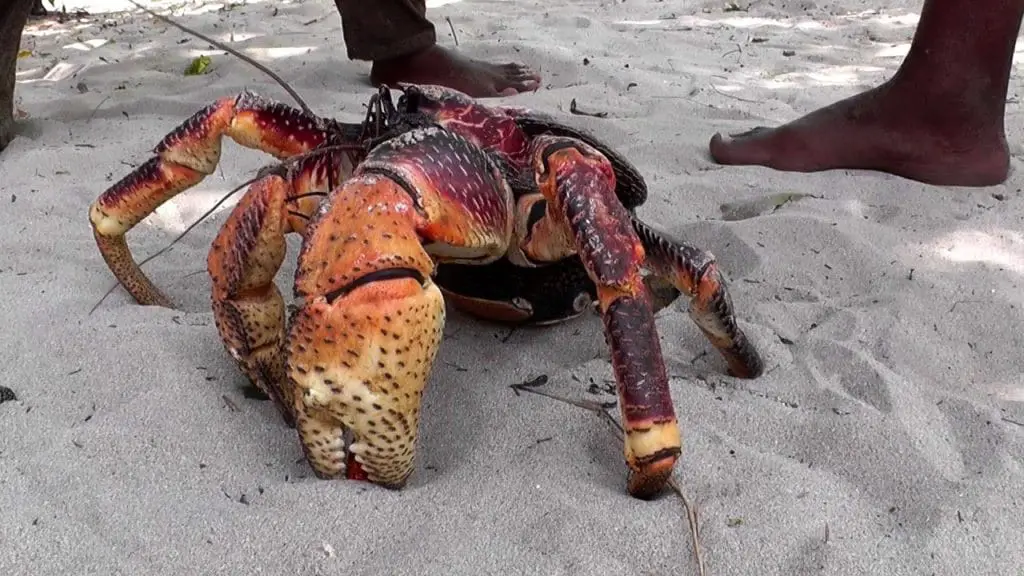
Dungeness Crabs
The sweetest (in terms of meat) species of grab on any type of crab species list is the Dungeness crab. As with many other crabs, this crab molts (sheds) as it grows larger. When threatened, a Dungeness crab will bury itself in the ocean floor. It’s named after a port in Washington.
The Dungeness crab, Metacarcinus magister or Cancer magister, is a species of crab that inhabits eelgrass beds and water bottoms on the west coast of North America. It typically grows to 20 cm across the carapace and is a popular seafood prized for its sweet, moist and tender flesh.
https://en.wikipedia.org/wiki/Dungeness_crab
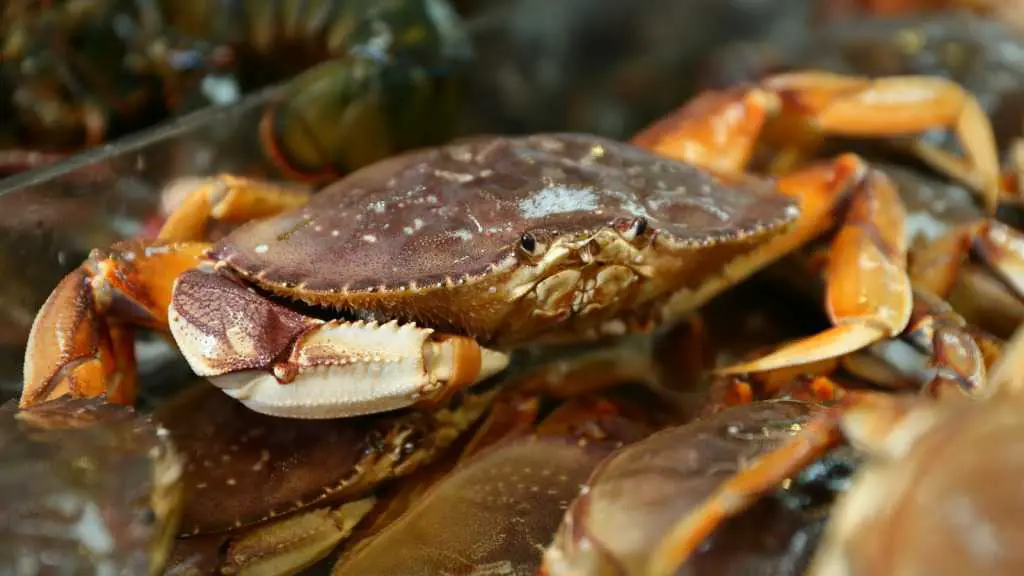
Hermit Crabs
Another of the most common types of crabs is the Hermit crab. These crabs are normally kept as a pet and you can get them at online fish stores like Petco.
Hermit crabs prefer temperatures between 78 and 83 degrees Fahrenheit, and they need a warm and cool area in the aquarium.
Hermit crabs are decapod crustaceans of the superfamily Paguroidea. Most of the approximately 1,110 species possess an asymmetrical abdomen that is concealed in a scavenged mollusk shell carried around by the hermit crab.
https://en.wikipedia.org/wiki/Hermit_crab
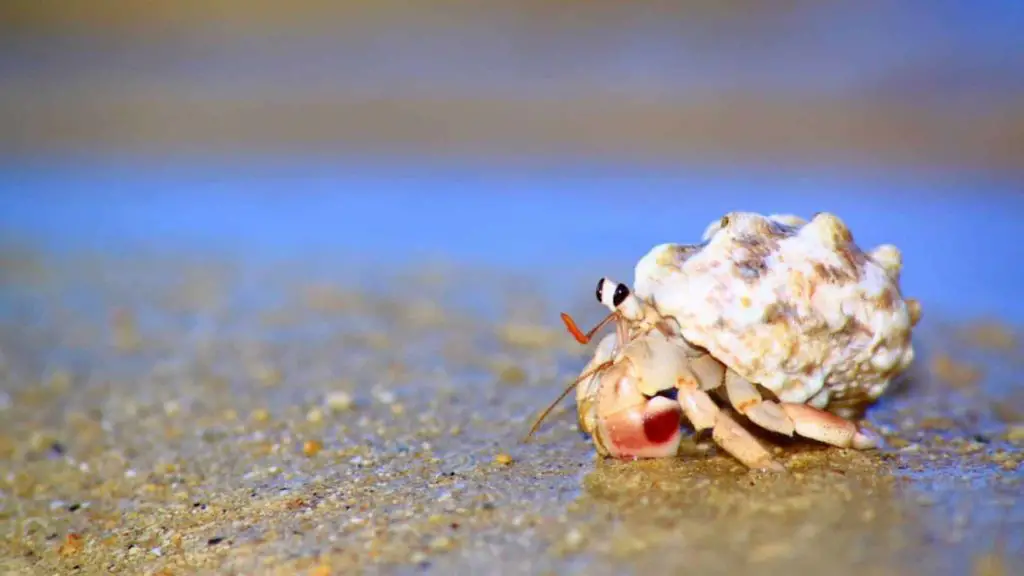
Horseshoe Crabs
Horseshoe crabs swim upside down and can survive out of the water for an extended period of time if their gills are kept moist. While horseshoe crabs are similar to crustaceans they are actually more closely related to scorpions and spiders. And, they have 10 eyes! Fishermen use them as bait for eel fishing.
Horseshoe crabs are marine and brackish water arthropods of the family Limulidae, suborder Xiphosurida, and order Xiphosura. Their popular name is actually a misnomer, for they are not true crabs. Horseshoe crabs live primarily in and around shallow coastal waters on soft sandy or muddy bottoms.
https://en.wikipedia.org/wiki/Horseshoe_crab
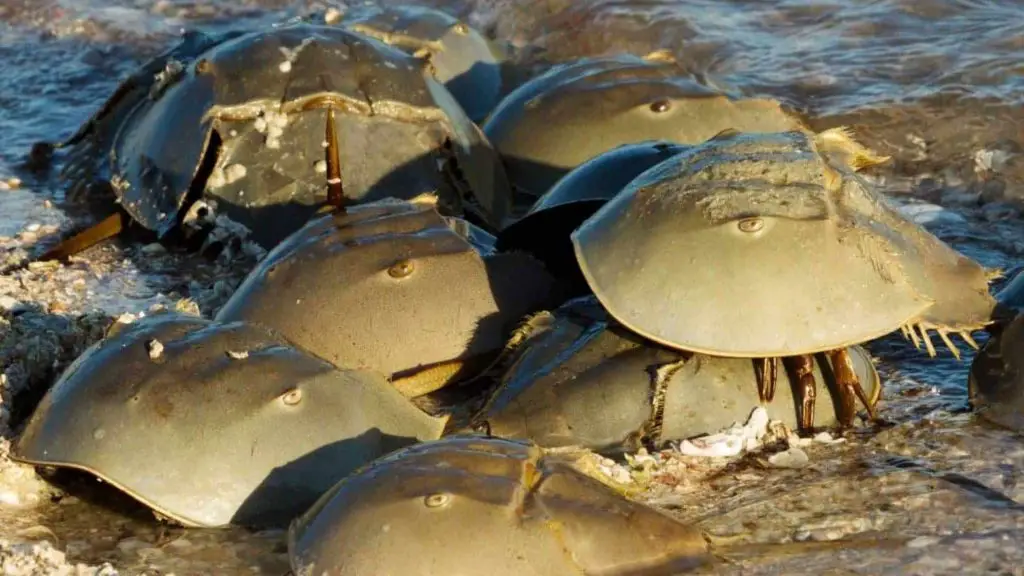
King Crabs
These types of crab also go by the names Alaskan King crab, the Russian crab, or the Japanese crab. They can be as heavy as 25 pounds in weight but only 1/4 of that weight is edible. Meat is normally found in the legs and claws.
These crabs have spines on their shells which vary in size, shape, and number with different species.
King crabs are a taxon of crab-like decapod crustaceans chiefly found in cold seas. Because of their large size and the taste of their meat, many species are widely caught and sold as food, the most common being the red king crab (Paralithodes camtschaticus).
https://en.wikipedia.org/wiki/King_crab
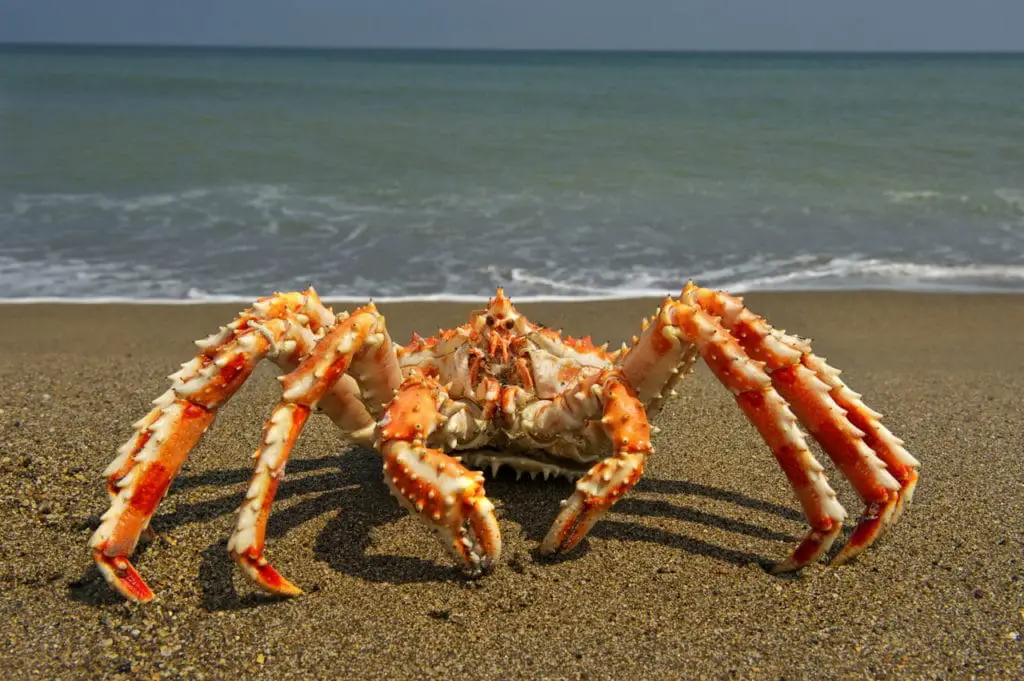
Rock Crabs
Rock crabs are also known as Peekytoe crabs or the Atlantic rock crab. Peekytoe crabs are popular with chefs for their sweet and delicate flavor.
Cancer irroratus is a crab in the genus Cancer. It is found from Iceland to South Carolina at depths up to 2,600 ft and reaches 133 mm across the carapace.
https://en.wikipedia.org/wiki/Cancer_irroratus
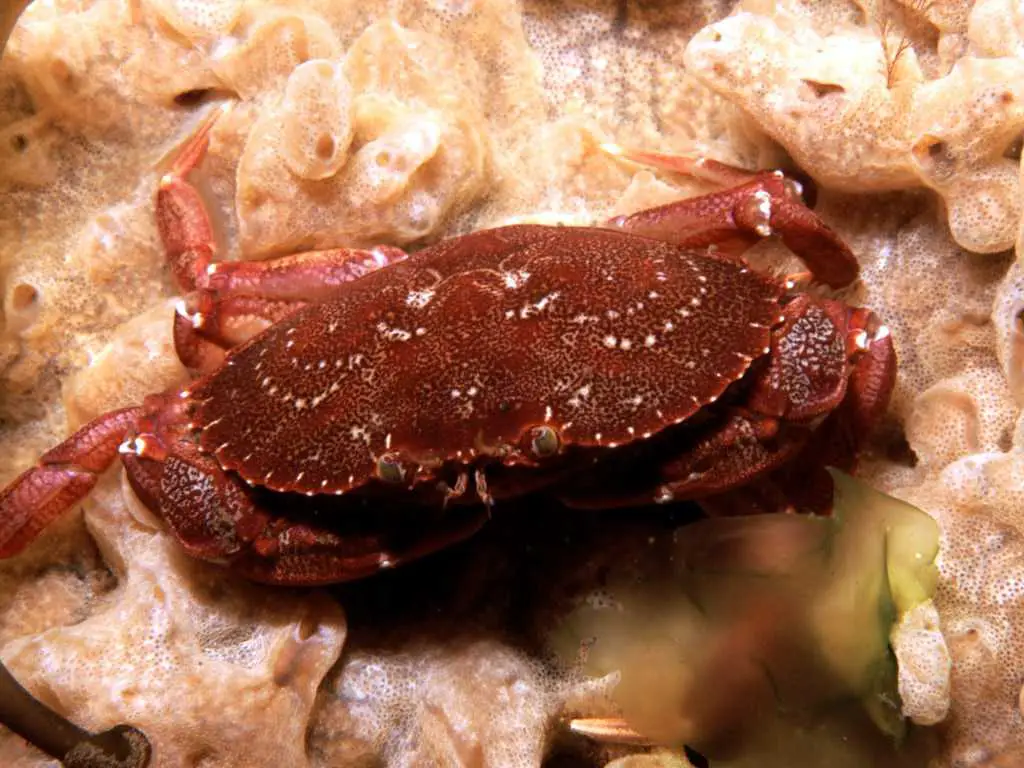
Japanese Spider Crab
These kinds of crab live off the coast of Japan and have the loooooongest legs of the different types of crabs. Their legs can grow up to 12 feet long! As their population dwindles, there are restrictions place on hunting the Japanese spider crab.
The Japanese spider crab, or Macrocheira kaempferi, is a species of marine crab that lives in the waters around Japan. It has the largest leg span of any arthropod. It is the subject of fishery and is considered a delicacy.
https://en.wikipedia.org/wiki/Japanese_spider_crab

Classification of Crabs
For the purpose of clarity, I’m going to break down the four main categories that make up the varying crab types or crab varieties. Each crab on this list falls into one of the following classifications:
Dromiacea
Dromiacea is a group of crabs, ranked as a section. It contains 240 living and nearly 300 extinct species. The oldest fossil dating back to the Jurassic period.
https://en.wikipedia.org/wiki/Dromiacea
Raninoida
Raninoida is a taxonomic section of crabs, containing a single superfamily, Raninoidea. This group of crabs is unlike most, with the abdomen not being folded under the thorax. It comprises 46 extant species, and nearly 200 species known only by fossils.
https://en.wikipedia.org/wiki/Raninoida
Cyclodorippoida
Cyclodorippoida is a group of crabs, ranked as a section. It contains the single superfamily Cyclodorippoidea, which holds three families, Cyclodorippidae, Cymonomidae, and Phyllotymolinidae.
https://en.wikipedia.org/wiki/Cymonomidae
Eubrachyura
The Eubrachyura group of crabs is divided into two subsections: Heterotremata and Thoracotremata. Crabs in this group are more advanced than other crab species. The two subsections of Eubrachyura are determined by the position of the genital openings on the crabs. The oldest specimens of the Eubrachyura group date back to the middle Jurassic period.
https://en.wikipedia.org/wiki/Eubrachyura
True Crabs
True crabs are crabs that are decapod crustaceans. Decapod crustaceans are ten footed crustaceans and all true crabs fall into this category. True crabs have a short tail in addition to an abdomen that is hidden underneath the thorax.
